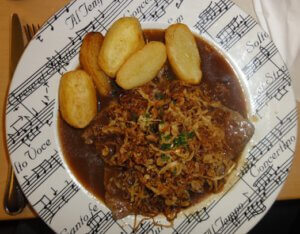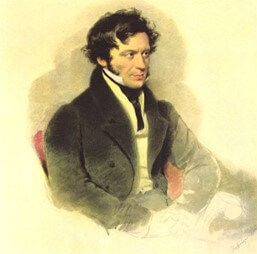Anna von Lieben or Cäcilie M. – hysterical women at the turn of the century in Vienna were common but why were only women considered hysterical? What was an ovarian press used for and what does it all have to do with Dr. Sigmund Freud?
Anna von Lieben could have been the happiest woman in the world on the outside. Grew up in the huge palace opposite the State Opera, the daughter of Eduard Todesco and Sophie Gomperz. The father had the money and the mother the beau spirit with which she successfully ran her salon. But while the men of the founding era became famous as bankers, patrons, scientists and inventors, for women it was the fashionable civilization disease of the nerves, called hysteria. The term hysteria comes from the ancient Greek word for uterus “hystéra”. Since ancient times, this disease is said to have occurred primarily in women. Early physicians believed that a uterus that was not regularly supplied with male semen would wander around the female body in search of sperm. It was thought the uterus could get stuck in the woman’s head and cause severe psychological damage. Although in the 17th century. Since the time when the German government had doubts about these traditional ways of thinking, the questionable therapies, to which women were preferentially subjected, continued to be used until well into the 19th century. nor prescribed. Treatment methods included exorcisms, inhalation of the smell of burnt male or goat hair to electric shocks or the ovarian press of the famous Parisian psychiatrist Jean-Martin Charcot. This was a type of leather saddle into which the patient was lifted. The press was attached to her abdomen and Charcot and his followers thought they could fight hysteria with it. He was also considered the inventor of hysteria. His most famous student was Sigmund Freud. The latter studied for some time with the “Napoleon of Hysteria” and became Charcot’s assistant in Paris. Freud, however, turned away from him again after some time. Freud’s prima donna was Anna von Lieben. At 41, she was ten years older than him and was named Cäcilie M. in the case studies. She was one of his first patients. At the age of 18, Anna had fled to her sister in London in the hope of not being married off. After falling ill, she returned to Vienna at the insistence of her parents and eventually surrendered to her fate by marrying Leopold von Lieben, the president of the Vienna Stock Exchange Chamber, who was twelve years her senior. They lived together in the Beletage of Palais Lieben, on the first floor of which is now Café Landtmann, one of Freud’s regular cafés. Her treatment with Freud was extremely intensive and Freud always sat at the head of the patient. The therapy sessions sometimes took place several times a day for years, usually in her palace rather than in Berggasse, where Dr. Freud’s practice was located. How did the hysteria manifest itself in the case of Anna? After long-ago traumatic experiences surfaced during speech therapy and everything was discussed, the pain subsided. Anna kept a diary of analysis, and Freud dared to formulate the hitherto unspeakable: namely, that sexual desires, unfulfilled dreams, and desire were often the real causes of much psychological suffering. And that neuroses are rooted in family relationships. Freud could learn a lot from Anna. She had also been treated by Charcot before, but his method of hypnosis did not work for Anna. That’s why she ended up with Freud, because no one knew what to do with her anymore. After thirty years of hysterical conspicuousness, inferiority complexes and depression, Anna von Lieben was addicted to morphine. She suffered a heart attack in 1900 and lived to be only 53 years old.




